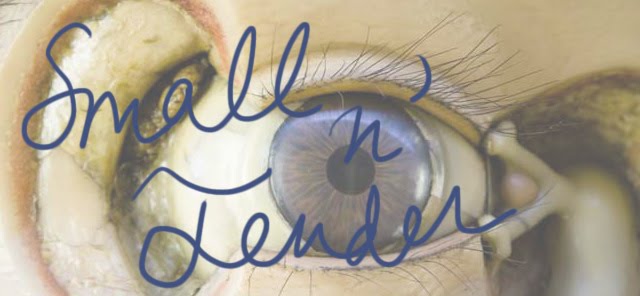I'm on an optics tear right now. It's precipitated by an idea a fellow artist-in-resident at Gallery F and I have been working on, to curate a show pairing abstract paintings with abstractions of biology made through the use of scientific imaging technologies, like SEM's, Confocal Microscopy, etc. Remembering the amazing scientific photographer Felice Frankel's work, I went to the public library yesterday to check out one of her older books, Envisioning Science, which is not only a really visually yummy book, but also lays out for the scientist how to produce compelling and communicative images.
While I was there I remembered a book my father had given me for Christmas years ago, David Hockney's Secret Knowledge, which lays out his argument that the great masters were using a variety of optical technologies, and that the leap in highly realistic paintings occurred in the 1420s, quite suddenly. The book is beautiful, a demonstration of the advancement of imaging capabilities, with beautifully reproduced Caravaggios and Giottos juxtaposed against each other. I've had my nose in the book all day, enmeshed in a compelling case for the relationship between science and art. Hockney says the painter Vermeer and Van Leuweenhoek, the great microscopist, were neighbors, and that Van Leuweenhoek was executor of Vermeer's will. Vermeer was clearly privy to developments in lenses, and Hockney makes the argument, through showing us his paintings, that lenses were at play in his work. So much for CP Snow's Two Cultures (which, happily, is a theory that's been taking the heat recently.)

I found this image of Joseph Wright of Derby's painting, An Experiment on a Bird in the Air Pump, which I'd never seen before reading this book. He made a lot of paintings about science, and Hockney argues was using the lens technology widely available by the eighteenth century.*

When I go to the library, it's an opportunity to book binge for free. I typically follow the bread crumb trail of a particular interdisciplinary thread and wind up with a sore back from lugging around tomes of a similar tune. Yesterday I came out of there with seven or eight books I didn't expect to find. I had Felice Frankel, David Hockney, and Roger Ballen, for his weird and impressive photographic compositions. I stumbled upon a book called Brought to Light: Photography and The Invisible, 1840-1900, which promises to reveal the efforts of imaging science to evidence the intangible; a Diane Ackerman, An Alchemy of Mind, that is apparently "the book she was born to write", about the way our brains work, which I found while looking for Empire of Light, Sidney Perkowitz's book about science and art's simultaneous discoveries about light. I also got Simon Ing's book which relates science and art in his exploration of how and why we see, and the imaging that has resulted from that power. To keep up on the times, I took out Nato Thompson's book Experimental Geography, which explores mapmaking and visualization of geographic data in the information age. Museumophiles might like the book Art and Artifact: The Museum as Medium, which, in addition to the Clarie Bishop edited Participation (part of the WhiteChapel/MIT Press Documents of Contemporary Art effort) I took out to learn what performers and exhibitioners are saying about communication in the interactive, three-dimensional realm.
I'm so excited I can go to my public library and connect with thinkers from different periods, from all over the world, probing at how we see, and how to harness that sense in the making of effective images. I'm still more satisfied by seeing real paintings, then real books, and lastly, the internet does help. I suppose I'm still an analog girl in a digital world, as E. Badu would say.
*The image of the Wright painting is from the website of the Journal of the Minerals, Metals & Materials Society : http://www.tms.org/pubs/journals/jom/0706/byko-0706.html






 I found this image of Joseph Wright of Derby's painting, An Experiment on a Bird in the Air Pump, which I'd never seen before reading this book. He made a lot of paintings about science, and Hockney argues was using the lens technology widely available by the eighteenth century.*
I found this image of Joseph Wright of Derby's painting, An Experiment on a Bird in the Air Pump, which I'd never seen before reading this book. He made a lot of paintings about science, and Hockney argues was using the lens technology widely available by the eighteenth century.*






